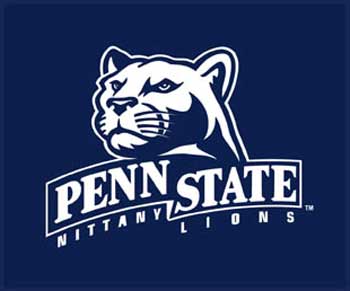
This is part one in a multi-part series on how Pennsylvania State University is implementing Enterprise 2.0. Prior case studies in this E2.0 series have been done in a similar fashion on Oce, Vistaprint, and Intuit. This case study was conducted with information provided by Bevin Hernandez who was the project manager when this initiative was completed. Bevin has since moved on to found a company called Firebrand where she is the Chief Organization Officer.
Penn. State University has around 22,000 employees in total however the Enterprise 2.0 initiative was deployed inside of Penn. State Outreach which is the part of Penn State that is responsible for showcasing and distributing research to other businesses and the public at large, this department has over 1,500 employees.
This initiative started with a business engagement and communications survey project in 2005. The actual E2.0 project started in 2008. However, the results of the survey showed that people weren’t aware of how their jobs affected rest of the organization and that employees were isolated in small work pockets. Employees didn’t have the necessary information to do their jobs.
The concept of enterprise collaboration started off with the traditional intranet, which had file storage and links to information. However, there really wasn’t much that could be done with the platform, in fact the only customizable piece of the intranet was a tiny little icon you could change when you logged in to change the “theme” of the intranet. Users also had the ability to see the local and current weather. The intranet was called “my outreach” and nobody used it. In fact, the last files were over a year old. It was decided that a “social” solution which allowed for two-way communication was essential. With the current intranet solution information was spotty and inconsistent and employees didn’t have a voice to get back “up the chain.”
A few solutions were considered such as Jive, a drupal based platform, Confluence, and ThoughtFarmer. Jive was immediately off the table because it was by the far the most expensive and also the most complex. Complexity was a huge barrier to entry as the secretary that has been there for 50 years and still used a typewriter should have been able to easily understand the platform. Penn State went with ThoughtFarmer because they were incredibly honest, open, and sharing and that is the behavior Penn State Outreach encouraged as well. The purchase of ThoughtFarmer was justified by cutting out one major event a year called the “day of connection.” This was an annual event for employees however capacity was limited to 400 out of the 1,500 employees so a large of the employee base was always lost. Instead the budget for this event was used on ThoughtFarmer which could connect ALL of the employees. Although ThoughtFarmer had less features it was also the most “moldable.”
The voice of the employee means dollars and cents. If you are dealing with things on the ground and the C-suite has no way to look at what’s going on then you’re getting a Chinese fire drill. Every hop and skip you have to take from each employee is a missed opportunity. Nobody wants to report bad news and generally by the time information goes from the ground level to the executive level it becomes very distorted. This means missed opportunities on ways to cut costs, innovation, and possible improvements to service offerings.
Key takeaways:
- Survey showed the business needs, employees felt isolated and did not understand how their jobs affected the organization, communication was poor.
- Deployed a traditional intranet portal but then decided that something “social” was needed
- Jive was too expensive and complex, ThoughtFarmer was a much better fit because of cost and ease of use
- Budget came from cutting out an annual event that connected only 400 out of the 1,500 employees to a platform that connected all of the employees
- The C-suite had no visibility into the organization at the ground level which resulted in missed opportunities
Comments